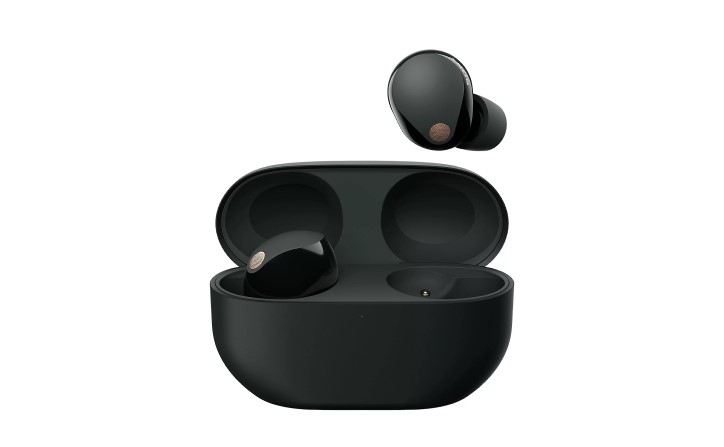Sony nails it when it comes to their headphones but is still trying innovations with their TWS. Remember the cool-looking Sony wf-1000xm4? They were bulky, but the 6mm drivers were absolute bangers in some tunes. The xm5 improves the design, making them slightly more approachable, but the new 8mm drivers made me listen to more music than I usually do for a review.
Design
The newer design is a welcomed iteration of the wf-1000xm series. The older design was bulkier and heavier than the rounded and relatively lightweight XM5. The case, too, is redesigned, and it retains wireless charging. Overall, the new design can be summarised in one word – smooth. The Sony wf-1000xm5 is excellent to use visually and physically as a pair of daily audio drivers.
Audio performance
Here is where I had to listen to this pair for the longest time. The new 8mm drivers are different from the older 6mm drivers. Sony has managed to keep the sound stage as impressive as the earlier XM4, and just about every frequency is tuned perfectly for a relatively louder, clearer-sounding pair of earphones. My biggest issue was the excursion from the newer pair compared to the older ones. The 6mm drivers of the xm4 produce deeper bass, while the 8mm drivers of the xm5 produce a much tighter bass that audiophiles would appreciate. This is the pair’s highlight; it has become so precise that it seems like a pair of flat monitor speakers unless you customise it.
The software is king here. Overall, you still get that fantastic spatial audio, an AI that maps your ear canals through the camera and creates an audio graph to suit your ears. Only proceed to use these earphones with the software. They improve the sound by many folds and have some neat tricks to track your usage, upload settings to the cloud and link to your Sony account for easy pairing. Ambient sound control, the ability to pair with two devices simultaneously and DSEE extreme with a 5-step equalizer and ten positive or negative step clear bass settings allow the best audio fidelity with a wide range of codec support. ANC is suitable for most scenarios and can sometimes struggle thanks to the seal created by the newer foam + plastic tips; it is a hit or a miss for most users. Mic quality, call quality and battery life were excellent.
Battery
The earphones were always used with ANC on, and I could not kill them even after using them for 8+ hours on some days. I’ve used these earphones for more than 90+ hours, and they have never managed to die on me yet. The battery life claimed is surpassed, with a quick charge from the case and the case’s capability to charge relatively fast with wireless charging ability. The case can charge these units twice, and unless you are on a multi-day trek, there are barely any chances the Sony wf-1000xm5 would run out of juice.
Verdict
Sony wf-1000xm5 is a definite evolution in all aspects, but the new drivers leave me wanting more bass excursions in life. Don’t get me wrong, I am nitpicking. In isolation, these are absolute masters of all and jacks of none. They have some of the most amazing sound quality in all genres of music, and this time around, they shall also appeal to the audiophile audience.
